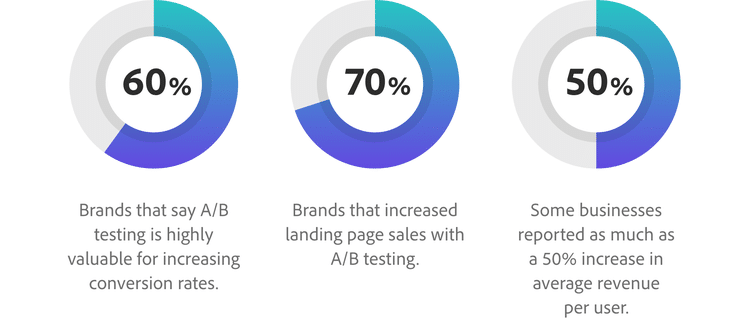
You’ve launched your paid media campaign. Ads are running, money is spent, but now comes the million-dollar question: Is it working? Analyzing paid media performance isn’t just a good idea; it’s essential.
At Marketing Insider Group, we know that without measuring the right metrics, you’re flying blind. That’s why in this article, we’re covering key metrics that can transform your paid media efforts from guesswork into a fine-tuned strategy. Trust us, once you understand these metrics, optimizing your campaigns will feel like a walk in the park.
Quick Takeaways
- Tracking key metrics like CTR, conversion rate, CPC, ROAS, and CAC is essential for understanding and improving paid media performance.
- Using analytics platforms like Google Analytics and automated tools like Zemanta enhances data tracking and campaign optimization.
- Regular monitoring, A/B testing, and strategy adjustments based on data insights significantly improve campaign results.
- Partnering with a professional marketing agency provides specialized knowledge and resources, making campaign management more efficient and effective.
Importance of Measuring Paid Media Performance
Why bother measuring paid media performance? Simple: Because guessing doesn’t cut it. Without clear metrics, you’re throwing money into the void and hoping for the best. We believe in making every dollar count.
Why Analysis Matters
Metrics guide your strategy, showing what works and what flops. They help refine your approach, ensuring your ads hit the mark. Data-driven decisions boost your ROI and make your campaigns more effective.
Aligning with Business Goals
Analyzing metrics aligns your campaigns with your business objectives. It’s crucial to set clear, measurable goals. Knowing what success looks like allows you to track progress and make informed adjustments. In fact, businesses that use data-driven marketing are 6x more likely to be profitable year-over-year.

7 Key Metrics to Track
Understanding which metrics matter is half the battle. Let’s break down the essentials:
1. Click-Through Rate (CTR)
CTR measures how often people click on your ad after seeing it. A high CTR means your ad is compelling and relevant. It’s a direct indicator of ad effectiveness.
2. Conversion Rate
Conversion rate shows the percentage of ad clicks that result in a desired action, like a purchase or sign-up. It’s crucial for linking ad performance to campaign goals. If your conversion rate is low, it might be time to tweak your landing page or offer.
3. Cost Per Click (CPC)
CPC tells you how much you pay each time someone clicks on your ad. It’s a key metric for managing your ad spend. Lowering CPC while maintaining quality traffic can stretch your budget further.
4. Return on Ad Spend (ROAS)
ROAS measures the revenue generated for every dollar spent on advertising. It’s the ultimate indicator of your campaign’s profitability. Calculate it by dividing total revenue by total ad spend. A high ROAS means your campaign is paying off.
5. Customer Acquisition Cost (CAC)
CAC shows the cost of acquiring a new customer through your ads. It’s vital for evaluating your campaign’s efficiency. Lowering CAC while maintaining or increasing quality leads boosts your overall profitability.
6. Impressions and Reach
Impressions count how often your ad is shown, while reach measures how many unique users see it. These metrics are important for assessing brand awareness and visibility.
7. Engagement Metrics
Engagement metrics like likes, shares, and comments reflect how well your audience is interacting with your ad. High engagement indicates that your content resonates with viewers, driving more organic reach and potential conversions.
Tools and Techniques for Effective Analysis
Now that you know which metrics to track, let’s talk tools. You can’t just eyeball these numbers; you need reliable analytics platforms to dig into the data.
Analytics Platforms
Tools like Google Analytics and Facebook Ads Manager are your best friends here. They offer robust tracking and reporting features that let you monitor performance in real time.
Google Analytics helps you understand user behavior on your website, while Facebook Ads Manager gives you detailed insights into your social media campaigns.
Integrating Data from Multiple Sources
A holistic view of your campaign’s performance requires pulling data from various sources. Combining insights from Google Analytics, Facebook, and other platforms ensures you’re not missing the bigger picture. This approach helps in creating more accurate reports and making informed decisions.
Utilizing AI and Automation
AI tools can take your data analysis to the next level. We like to leverage AI platforms like Zemanta to streamline data tracking and reporting.
Zemanta automates native advertising, allowing you to distribute your content across various platforms seamlessly while offering advanced targeting options and real-time analytics. Automation tools like Zemanta not only save time, but also reduce the chances of human error, ensuring you get precise insights every time.
Best Practices for Optimizing Campaign Performance
You’ve got the tools and metrics down. Now let’s talk about how to use this data to boost your campaign performance.
Working with Professional Marketing Agencies
Partnering with a professional marketing agency can supercharge your efforts. Agencies like ours bring specialized knowledge and resources to the table. We provide expert insights, advanced tools, and proven strategies to optimize your paid media campaigns.
Not only do you get the perks of great results, but we also take the heavy lifting off your plate so you can focus on what you do best. This collaboration ensures that your campaigns are not just effective, but exceptional.
A/B Testing
A/B testing is essential for improving ad effectiveness. Test different versions of your ads to see what resonates best with your audience. Change one element at a time—like the headline, image, or call-to-action—to identify what drives better performance.
At Marketing Insider Group, we’re big fans of this method because it’s a straightforward way to optimize your campaigns. In fact, 70% of marketers believe that A/B testing is essential to boost conversion rates.

Adjusting Strategies Based on Data
Data should drive your decisions. Use the insights you gather to refine your targeting and messaging. For example, if a particular ad isn’t performing well, tweak its content or target a different audience. Being flexible and responsive to data can significantly enhance your results.
Regular Monitoring and Reporting
Consistency is key. Regularly monitor your metrics and set up performance reviews. This helps catch issues early and allows you to make timely adjustments. We recommend weekly check-ins to stay on top of your campaigns.
Continuous Learning and Adaptation
It’s no secret that the digital scene is always changing. Stay updated with industry trends and be ready to adapt your strategies. Follow relevant blogs, attend webinars, and engage with industry experts to keep your knowledge fresh.
Boost Your Paid Media Performance Today with MIG
Analyzing paid media performance is crucial for maximizing your campaign’s success. By tracking the right metrics, leveraging advanced tools like Zemanta, and implementing best practices, you can turn data into actionable insights.
Ready to boost your paid media performance? We’ve got you covered. Get started today by checking out our weekly blog content service, or schedule a free consultation to learn how Marketing Insider Group can help you stay ahead in the content marketing game.
0 Commentaires